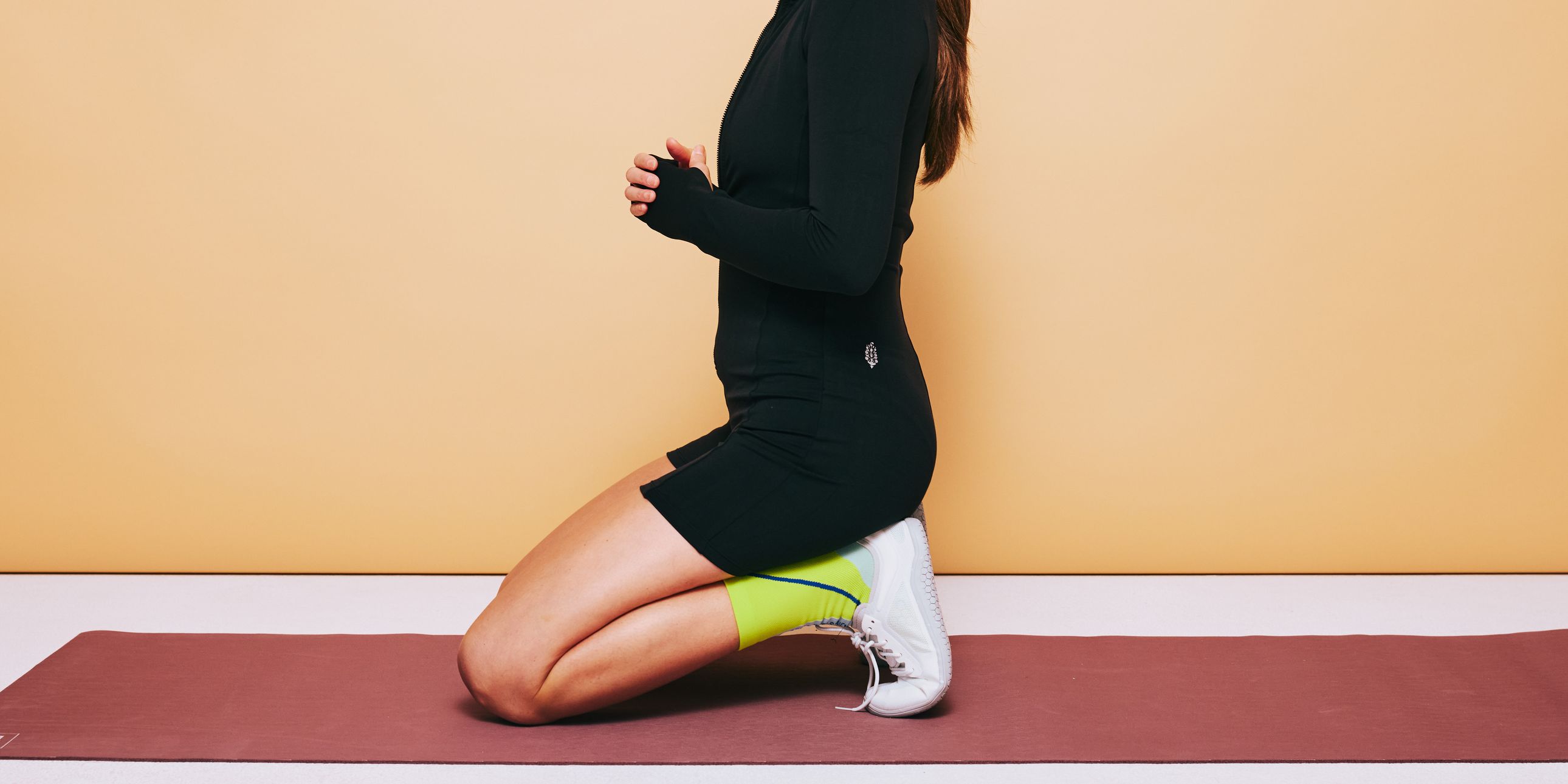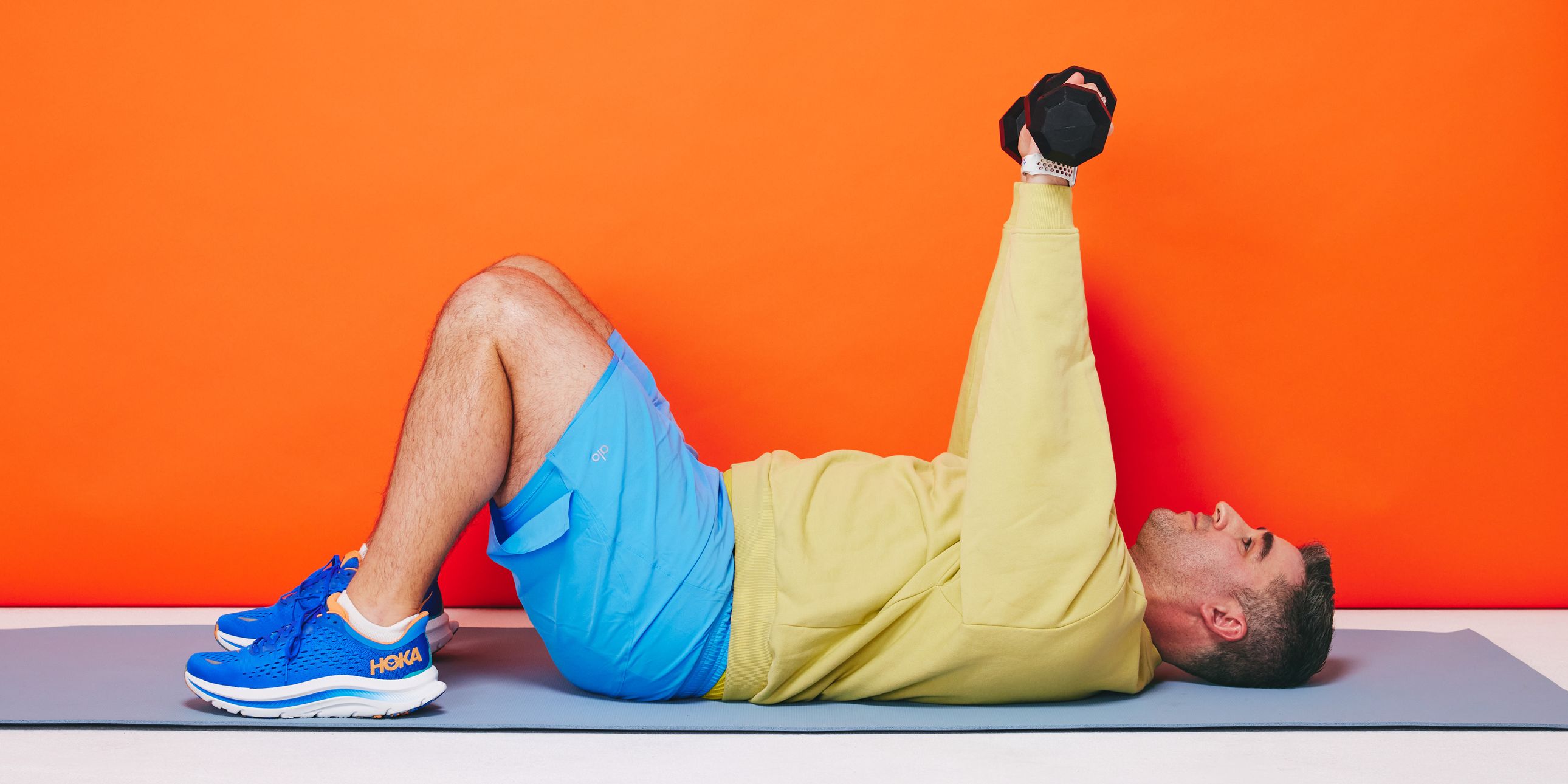11 Plantar Fasciitis Exercises Your Achy Feet Are Begging For

Tight. Achy. Sharp. Stabbing. There are lots of unpleasant terms that describe pain on the bottom of your foot. Luckily, plantar fasciitis exercises can go a long way in relieving that discomfort. In fact, strength moves and stretches are a really effective way to treat this common condition, making at-home relief a reality.
It sucks to have PF, but if you’ve been plagued by it, you’re definitely not alone: Millions of Americans wrestle with heel pain every year, and plantar fasciitis is the most common cause. We tapped a physical therapist and a podiatrist for a primer on all things plantar fasciitis, including what it is, what causes it, and most crucially, what specific exercises can bring you—and your barking tootsies—a much-deserved break.
So what even is plantar fasciitis, and what causes it?
First, let’s start with the plantar fascia: It’s a band of tissue on the bottom of your foot that extends from the heel all the way up to your toes, splaying out as it reaches the top, Winnie Yu, PT, DPT, CSCS, a NYC-based physical therapist and strength coach at Bespoke Physical Therapy, tells SELF. The plantar fascia helps absorb shock when you walk, run, and perform high-impact activities like jumping. It also supports the arch of the foot, though that’s not its primary job, Dr. Yu explains.
So what is plantar fasciitis? Well, it’s when this tissue gets overloaded and becomes inflamed and painful as a result. You can stress your fascia by doing too much exercise on your forefoot, Stephen M. Pribut, D.P.M., a Washington D.C.-based podiatrist and affiliated faculty with the biomedical engineering department at George Washington University, tells SELF. Think: jumping jacks, hill sprints, and bounding on a trampoline, since those motions can overload the area, as well as suddenly ramping up a walking or running program without giving your body enough time to recover, he adds.
Tightness in the calves can be another culprit, since that muscle group is attached to your heel, which means extra tension there can yank on the plantar fascia, Dr. Yu explains. Beyond that, running or walking uphill and moving on uneven surfaces can place extra stress on the tissue, and specific foot anatomy can play a role too: Folks with flat feet or high arches can walk in patterns that overload the plantar fascia, as SELF previously reported.
As for how it feels, there’s one often-cited hallmark: “It may start off as a sharp pain that’s present in the first couple steps in the morning,” Dr. Yu explains. From there, it can progress to pain felt every time you get up after being sedentary for a while. And in severe cases, it can hurt every time you take a step, causing you to limp when you walk, Dr. Pribut says.
What’s the best way to treat plantar fasciitis?
When you have plantar fasciitis, the bottom of your foot often feels suuuper tight. “Your natural inclination is to want to stretch it because it feels so freaking restricted,” Dr. Yu says. That reaction isn’t wrong—in fact, stretching your calves, as well as the tissue itself, “is very beneficial,” Dr. Yu says. That’s because by easing tightness in and around the plantar fascia, you can reduce stress on the tissue. However, stretching is not the only approach.



